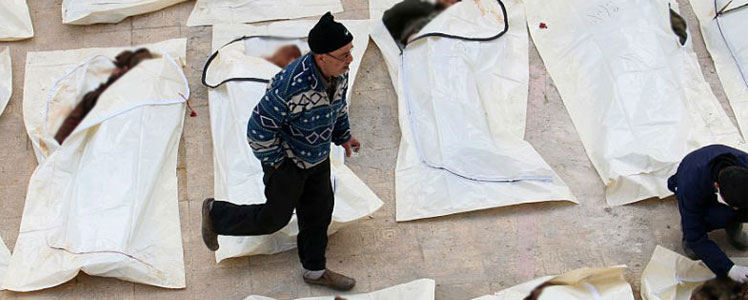Article: Statistics and Accountability in Syria
Why Just Counting the Dead in Syria Won’t Bring Them Justice: A full tally of the war’s horrific violence requires estimates, models, and sophisticated pattern analysis to understand who’s responsible and why.

Nearly 18,000 people died in Syrian government prisons between March 2011 and December 2015. My colleagues and I at the Human Rights Data Analysis Group (HRDAG) calculated this estimate for Amnesty International, which published the findings on Aug. 18. That’s just a small fraction of the overall death toll from the Syrian war: Hundreds of thousands of people have been killed and millions more displaced by this five-years-and-counting conflict. But what does this catalog of shattered lives mean? How can we gather accurate statistics about the patterns of killings in Syria and use them as a tool to bring the perpetrators to justice?The total number of violent deaths tells only a small part of the story. Beyond the magnitude of the horrors that have befallen Syrian civilians, it is even more important to understand the patterns of violence: Where in Syria is the violence worse? Are deaths decreasing over time or increasing? Does violence mostly affect urban elites or people in rural areas?
The fog of war is a convenient screen for those who commit mass violence, and even more so for those who apologize for the perpetrators. But careful documentation, meticulous forensic investigation, and rigorous statistics can help us pierce the fog to understand how violence works in conflict. Perhaps most importantly, real facts enable meaningful accountability, from historical memory to war crimes trials.
Over the last 20 years, rigorous statistical analysis of patterns of killing has helped bring mass murderers to justice in trials for crimes against humanity, war crimes, and genocide. For example, in the trial of former Yugoslav President Slobodan Milosevic in 2002, I presented statistics about migration and killings in Kosovo in 1999. While we cannot prove with statistics that the violence was caused by actions of the Yugoslav government, the patterns make clear that the war’s suffering could not have been the result of NATO’s bombing campaign, nor could it have been caused by the insurgents of the Kosovo Liberation Army. The prosecutor used this argument to rebut the defense’s deflection of responsibility, and to support the claim that Yugoslav government actions were the most likely cause of the suffering.
In human rights, survivors’ testimonies tell us what happened — but statistics answer questions about how widespread or systematic the violence was. They provide the context so that the victims’ stories can be understood as part of a wider framework.
